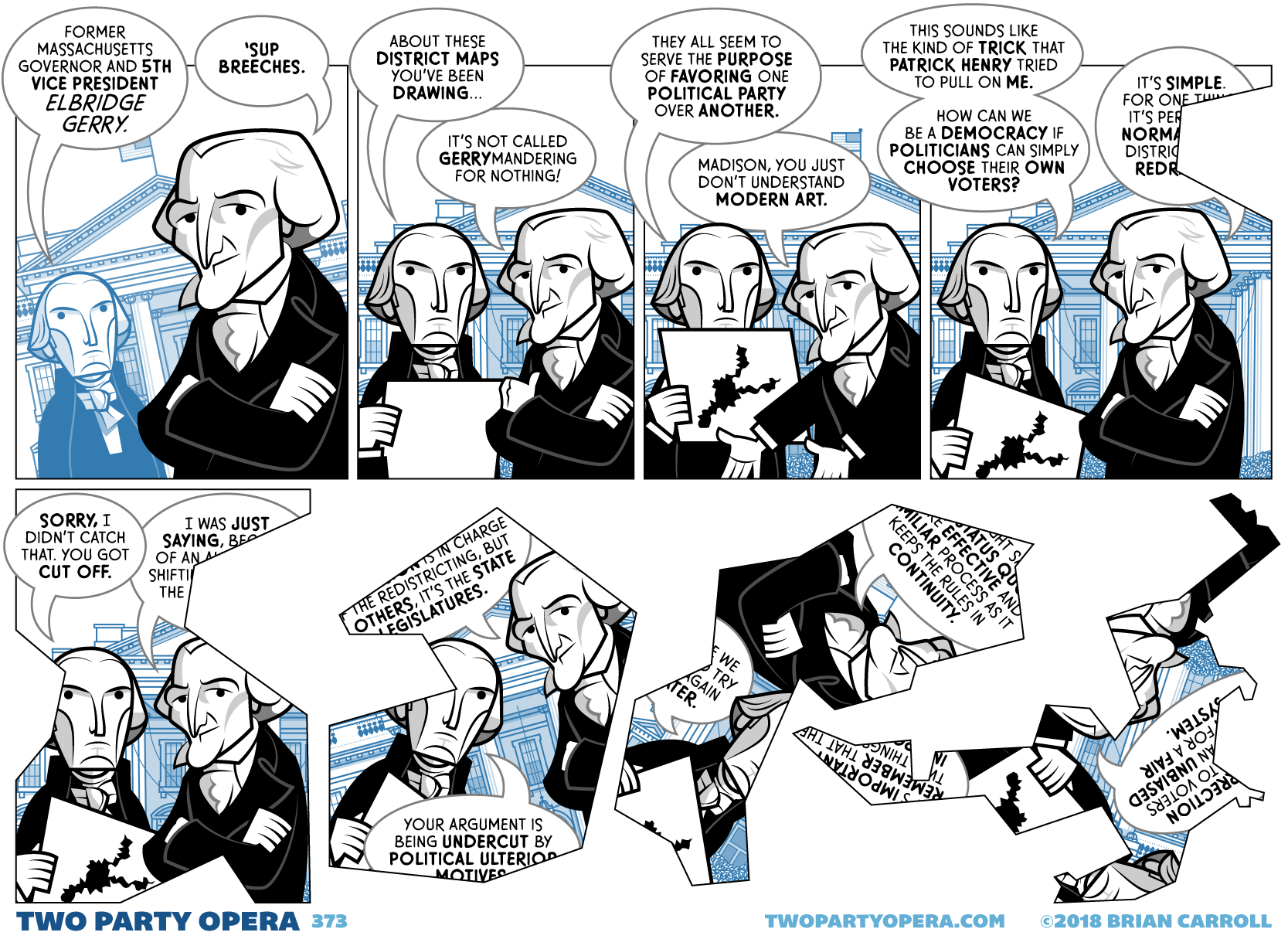Putting the Gerry back in Gerrymander
Gerrymandering, the process of redrawing the district lines for political advantage, was first coined in an editorial cartoon criticizing then-governor of Massachusetts and future Vice President, Elbridge Gerry (pronounced “Gary”) for approving a district map with a boundary so bent out of shape that it resembled a salamander (for a different kind of electoral math: Gerry + salamander = Gerrymander).
The process is controversial for its blatant audacity to manipulate American voters by giving healthy majorities to carved-out borders to vote for the party in charge, and either confining all your opponents to a single district or breaking them up across your new friendly territories. It’s a way for politicians to control who gets to vote for them and make sure they stay in power, regardless of the actual will of the people.
Before it was coined, James Madison is believed to have been one of the first targets, when Patrick Henry (Mr. “Give me Liberty or give me death”) tried to stop him from being elected to the House of Representatives by redrawing the Virginia 5th in time for the election of 1788. Running against none other than James Monroe, Madison was still able to win.
Luckily, we’re finally seeing process towards real reform. Just yesterday, judges struck down North Carolina’s district map as unconstitutional, which may have huge implications for the 2018 midterm elections once they submit a new plan later this month. There are two other challenges to gerrymandering before the Supreme Court right now, and I’m sure this ruling in North Carolina will contribute to those deliberations. If the Supreme Court also rules it unconstitutional, we could see badly needed reform happen quickly nationwide.
Regardless of your party affiliation or political ideology, the success of a representative democracy depends on having a proportionate voice within your elected government. Everything else is varying degrees of corruption.





